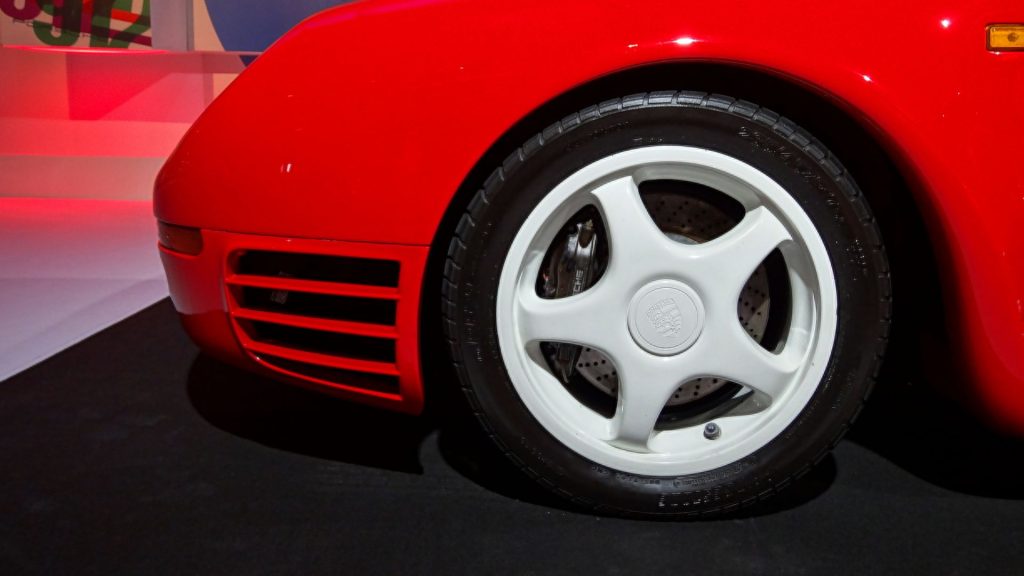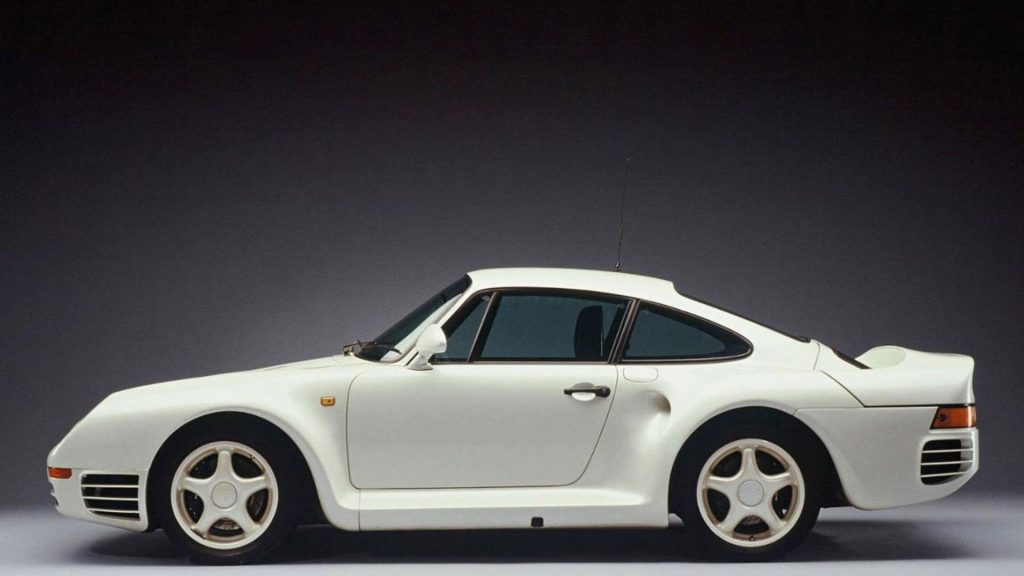
Porsche 959 Front - Source: Matti Blume (CC BY-SA or GFDL), via Wikimedia Commons
Table of Contents
12. Porsche 959 Was Initially A Race Car

The Porsche 959 was developed and launched as a Group B race car at first. However, to meet FIA’s homologation rules, Porsche launched a street-legal version later. The FIA homologation rules required the brand to manufacture atleast 200 units to be eligible. During its production run, a total of 337 units of the car were produced, making it a rare and classic sports car today. One of the units is kept on display at the Porsche historic hall in Stuttgart, Germany.
11. The 959 Was The “Fastest Production Car” For A Year

Soon after its launch, the 1987 Porsche 959 was impressive for its power figures and performance stats out on the roads. Under normal conditions, the car was able to achieve a top speed of 198 miles per hour. With that number, the 959 became the fastest production car for a year until the Ferrari F40 came along.
10. Porsche 959 Won In Its Class At The Le Mans

The Porsche 959 was modified a bit and named 961 for the Le Mans in 1986 and it won in its class as well. However, not only in Le Mans, but the 959 also won the Dakar Rally the same year, which makes it the only car ever to win two different race types in a single year.
9. Porsche 959 Came With TPMS

Practically, a tire pressure monitoring system was almost considered wizardry back in the 80s. And none of the sports cars or luxury cars came with this feature. However, the Porsche 959 broke the norm by having this system as standard on its road-going model. Developed in collaboration with Bosch, it was known as RDK or Reifen Druck Kontrolle which translates to Tire Pressure Control.
8. The 959 was a Loss-Making Car For The Brand

Unlike other cars from the brand, the 959 led Porsche to lose money on every single model it built and sold. Due to the cutting-edge techs back then, the car had a projected price tag of around half a million dollars. However, at launch, the price tag was set at $225,000 only.
7. First Car To Use Sequential Turbochargers

When the 959 was in its development phase, turbocharging on a gasoline engine to gain performance was in a nascent stage. Moreover, the biggest drawback of turbocharging was turbo lag at lower engine speeds which kept the manufacturers from using it in performance cars as well.
Porsche developed and implemented the idea of a parallel twin-turbo system. With that, the motor was equipped with two turbos, one smaller than the other. As such, the smaller turbo spooled up quicker than the bigger one and provided the necessary boost while the bigger one spooled up and took over later.
6. Porsche 959 Was Never Crash Tested

Porsche was quite confident that it would sell all units of the 959 without having to launch the car in the US. Moreover, the US Department of Transportation wasn’t convinced that the 959 was quite close to the 911 and did not need crash testing either. As such, the NHTSA (National Highway Traffic Safety Administration) required four 959s for crash testing and this translated to $2 Million for the brand. Evaluating the entire scenario, Porsche decided not to have the 959 crash tested for the United States.
5. First Car To Use Torque-Vectoring AWD

The Porsche 959 was the first production car to use a torque vectoring system for its AWD layout. Even to this day, the system is quite complex by design and finds limited applications as well. Having said that, the 959 came with a center differential responsible for transfer of torque independently unlike modern-day cars which have torque vectoring for all four wheels.
The torque vectoring system made the 959 quite capable both on the roads and out on the tracks, contributing to its excellent track performance.
4. The First Production Car To Use Active And Adaptive Suspension

While active and adaptive suspension systems are more common now, they are still reserved for expensive vehicles out there. However, back in the 80s, the system was alien-tech but Porsche implemented it on the 959. The suspension was adjustable too, giving a solid lift of 2 inches to the standard ride height of the car. As such, the 959 was driveable on bad roads too.
3. Bill Gates Purchased The 959 Even Before It Was Legal In The US

Bill Gates was powerful and influential enough to be able to convince the US government to change certain rules that would legalize the 959. While the norms were eased eventually, Bill Gates’ 959 was more than 25 years old. But it was kept from being destroyed by the US Customs and was locked within his premises!
2. Porsche 959 Price & Value

The Porsche 959 back in 1987 with all the bells and whistles was priced at $225,000 when new. Almost four decades later, the 959 has witnessed a sky rocketed value. Currently, the 959 holds a value of $1.8 Million. The Broad Arrow Auctions in 2024 at Amelia Auction sold a 1988 959 Reimagined (tuned to produce 800+ horsepower reportedly) for $3.08 Million. The René Metge’s 1985 959 Paris-Dakar however went above and beyond after fetching $5.9 Million at RM Sotheby’s Porsche 70th Anniversary Auction.
1. 959 Specs Were Ahead Of Its Time
The Porsche 959 featuring the sequential twin-turbochargers on the 2.8L Flat-6 engine was a perfect blend for 80s. The motor gave the 959 exceptional capabilities. If the regular 959 was not appealing enough, buyers could opt for the optional S package which translated to a crazier spec 959 meant to outrun anything on the road.
| Specs | Porsche 959 | Porsche 959 S |
| Price | $225,000 (Original) | N/A |
| Engine | 2.8L twin-turbocharged Flat-6 | 2.8L twin-turbocharged Flat-6 |
| Horsepower | 444 hp | 508 hp |
| Torque | 369 lb-ft | 414 lb-ft |
| Transmission | 6-speed manual transmission | 6-speed manual transmission |
| 0 to 60 MPH | 3.7 seconds | 3.4 seconds |
| Top Speed | 198 MPH | 209 MPH |
| Weight | 3,197 lbs | 2,976 lbs |
While the 959 (a.k.a 959 Komfort) itself was quite impressive, the 959 S (Sport) turned out to be a notch above and beyond. To save weight, the 959 S compromised on comfort by removing the air conditioning, electric windows, rear seats and the levelling system for the chassis, etc. Only 29 such examples were ever made making it even rarer than the Komfort.
FAQs
Q. How Many Porsche 959 Were Made?
A. A total of 337 959’s were reportedly ever made including 29 units of 959 Sport and 37 prototypes and pre-production models.
Q. How Much Is A Porsche 959?
A. Originally sold for $225,000 in late 80s, the 959 currently holds an average value of $1.8 Million in 2024.







